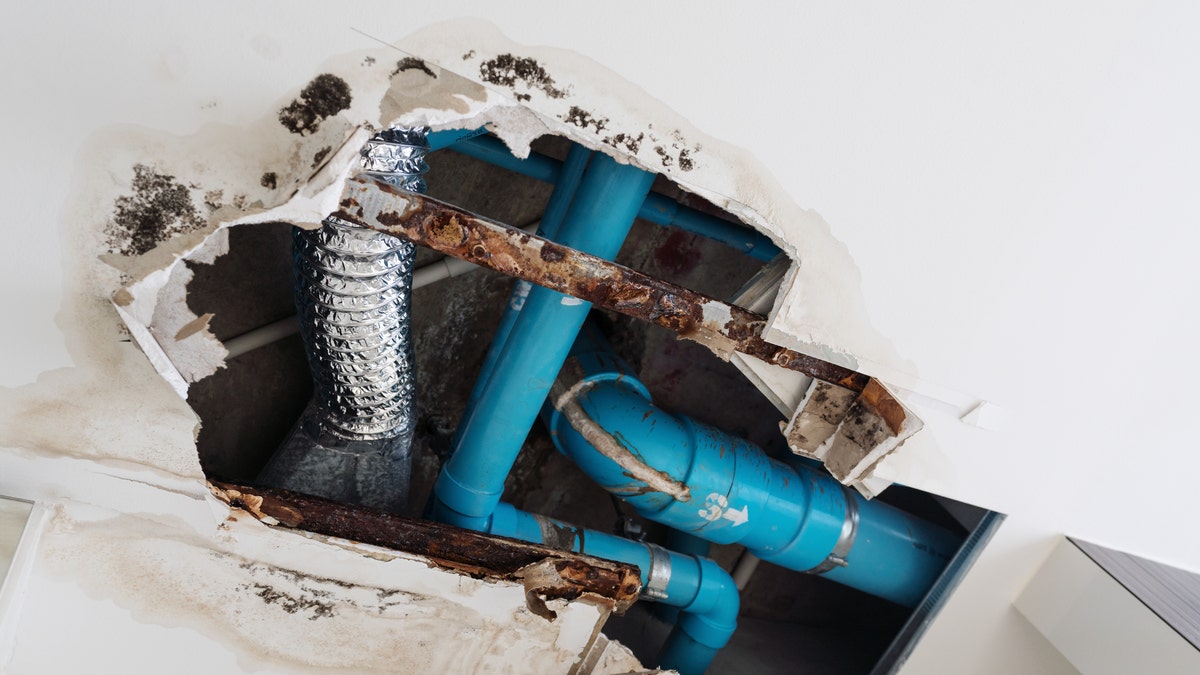
The average homeowner spends close to $7,000 on home improvement throughout the year. (iStock)
The cost of owning a house includes more than just your monthly mortgage payment. Home improvements and repairs also take up a large amount of your budget, but they're essential to maintaining — and maybe even increasing — the value of your home.
But home repairs can be expensive. According to Dan DiClerico, a HomeAdvisor expert, the average homeowner spends close to $7,000 on home improvement throughout the year.
“That’s why preventive maintenance is key — basically taking steps to make sure your home isn’t hit with sudden, catastrophic damage,” DiClerico says. He strongly encourages homeowners to maintain a rainy day fund in their household budget, ideally 2 to 5 percent of the value of the home.
So what are the most expensive repairs all homeowners should be aware of? Our experts revealed the budget-draining projects you could encounter — along with tips for avoiding (or delaying) them.
More From Realtor.com
1. Foundation restoration/foundation wall repair
Your foundation is a vitally important part of your home — it supports the weight of the entire structure. That's why it's worth paying for repairs the moment they surface.
“A home with a damaged foundation can be unsafe to live in, so it is worth the investment,” says Alex Berezowski, owner and general manager of the Foundation Experts.
Since each foundation problem is unique, Berezowski says there isn’t a fixed price, but his company has completed jobs that cost upward of $100,000 for an extensive foundation fix. For a smaller project like repairing a foundation wall, DiClerico says the average cost is just over $4,000, but a serious collapse could cost you $10,000 or more.
The best way to prevent foundation problems is to keep water away from the foundation walls.
"Water is the biggest enemy of foundation walls, causing cracks, buckling, and other serious structural issues,” DiClerico says. "Maintain gutters, downspouts, and leader pipes so that they channel water away from the house.” Additionally, he says it’s important to ensure the ground around the foundation is properly graded so it slopes away from the house.
However, if you have an older home, repairs may be inevitable.
“The concrete used at the time of construction 100 years ago is not the same as the concrete we use today,” Berezowski says. “The effects of our climate on older foundations over the course of 100 years can also contribute to the deterioration of older foundations.”
So if you buy or own an old house, be prepared to handle the costs of restoring and repairing it.
2. Replacing a furnace or central AC system
Your cooling and heating equipment works hard to keep your house at a comfortable temperature. But when it gives out, you’ll need to pay a pretty penny to replace it.
“It will cost at least a few thousand dollars per system to replace your whole-house heating or cooling equipment,” says DiClerico. Depending on the size of your system and how complicated the work is, he says, the cost could easily exceed $10,000.
"Neglect is one of the main killers of heating and cooling equipment, and for a system to reach its full life expectancy — usually up around 15 years — it needs to be properly maintained,” DiClerico says.
Have your furnace serviced at the start of winter and your central AC system serviced at the start of summer.
“A trained professional will do things like check the furnace filters and flush out the AC’s condenser coils, which will keep the units running smoothly and efficiently,” DiClerico says.
3. Repairing water-damaged walls and ceilings
Water flowing through your plumbing fixtures is a good thing. Water running anywhere else? Not so good.

"If the water damage is bad enough, you might need to replace an entire ceiling or wall at an average cost of $1,500,” says Dan DiClerico, a HomeAdvisor expert. (iStock)
"If the water damage is bad enough, you might need to replace an entire ceiling or wall at an average cost of $1,500,” DiClerico says. “The bill could run as high as $6,000, especially if you need to also replace damaged crown molding.”
In fact, Chris O'Rourke, vice president of property claims at Mercury Insurance, says his company sees more water claims than any other type of claim.
“While certain perils are seasonal, water damage can occur anytime of the year,” he says.
Some of the most common causes of water leaks are burst water pipes and leaky roofs. To prevent your waterlines from bursting, DiClerico recommends wrapping pipes in unheated parts of the home with insulation sleeves.
O’Rourke advises homeowners to routinely inspect and maintain appliance hoses and water pipes to guard against cracks and leaks, and to immediately replace damaged hoses and pipes.
4. Replacing the lawn
Lawn work can be laborious and time-consuming, but having to replace it is pricey.
“Sod installation costs homeowners an average of $1,822, but the project can run as high as $4,500,” DiClerico says.
“Poor soil conditions and pests are two of the biggest threats to turf grass,” DiClerico says. If your situation is really bad, you might have to rip out the lawn and start all over (and yup, you'll be paying more).
He recommends having your soil tested to see which nutrients are missing. Inexpensive soil testing kits sold at home centers will reveal the pH level and help you identify which type of fertilizer you should use to balance everything out.
5. Removing a tree
Uprooting a tree costs around $750 on average.
“But the project can easily set you back several thousand dollars if it’s a massive tree with deep roots, or if power lines are present, since the tree removal service will need to take special safety precautions,” DiClerico explains. Also, it costs extra to have the stump removed.
The key to getting ahead of a problematic tree situation is periodic monitoring.
"Bring in an arborist to inspect trees for dead or diseased limbs,” DiClerico says. The pro should be able to remove the damaged limbs, which will keep the disease from spreading.
“They will also identify insect infestations so you can hopefully nip the problem in the bud,” he says.
The post. "5 Crazy Expensive Home Repairs — and How to Avoid Them" appeared first on Reator.com®.